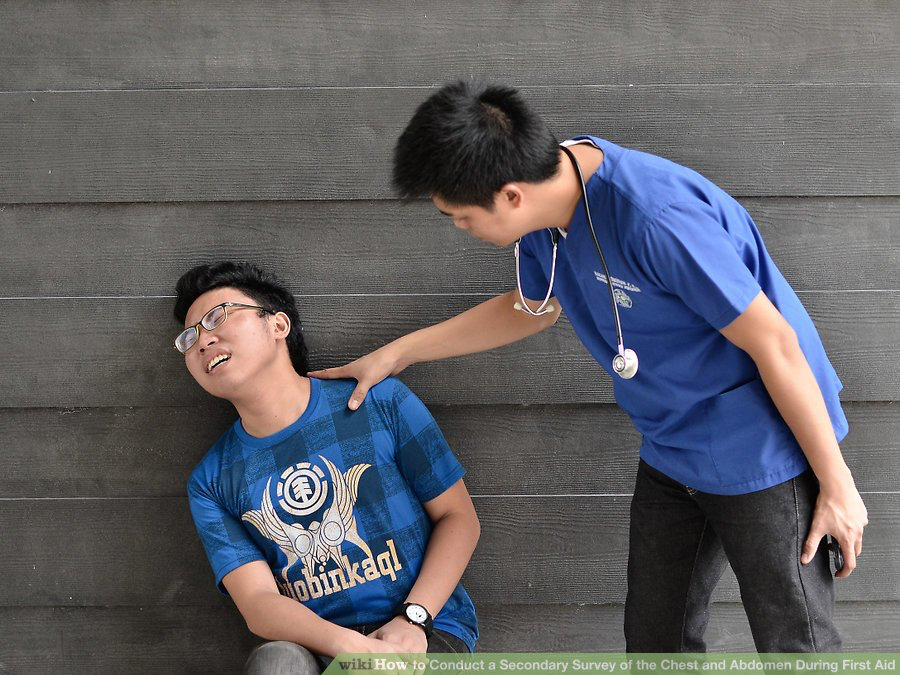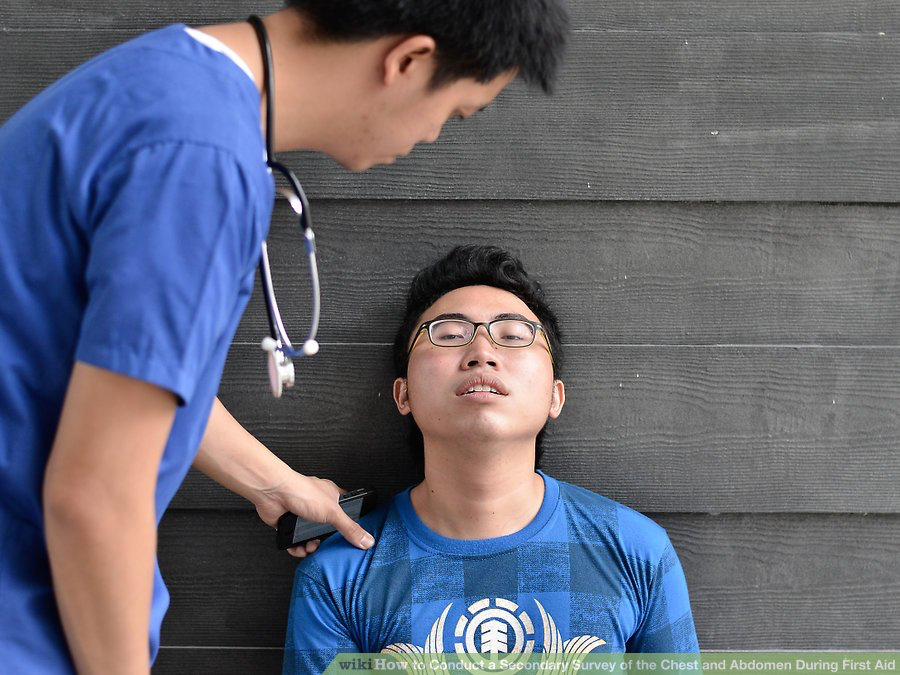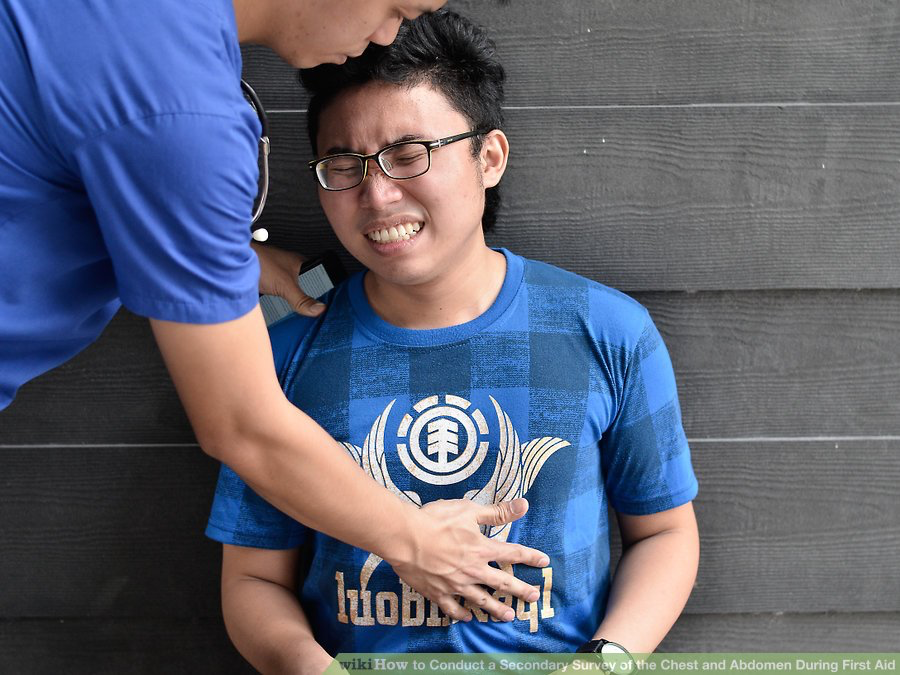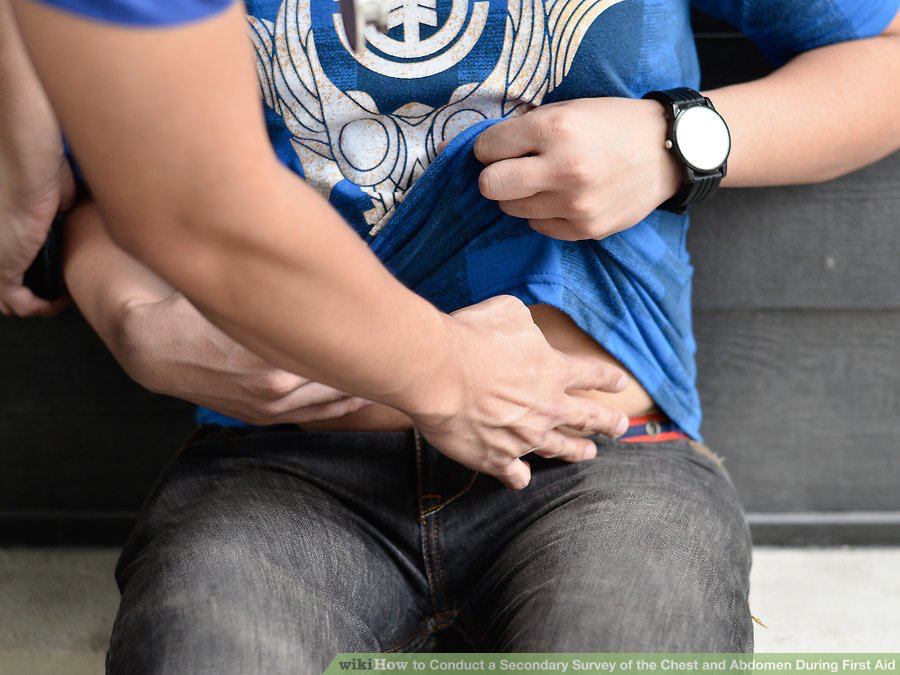Back First Aid Explained
How to Conduct a Secondary Survey of the Chest and Abdomen During First Aid
We have selected the following expert medical opinion based on its clarity, reliability and accuracy. Credits: Sourced from the website wikiHow. Please refer to your own medical practitioner for a final perspective, assessment or evaluation.
Overview
Conducting a primary or a secondary survey of the chest and abdomen during first aid is done during the patient assessment phase of the emergency operations incident. The patient assessment phase is the methodological procedure used to figure out what is wrong with the victim or patient. They are done systematically so that every time, every patient is treated in the exact same manner so that it is completely routine and nothing is overlooked. Because of this systematic approach, learning to conduct a secondary survey of the chest and abdomen during first aid is a very simple, yet vital task.
Steps
1. Know the steps in the primary survey
This is the initial patient assessment that is done right after the scene size-up. This is your initial thoughts and decision making period as you roll up on the scene of the accident or incident. The basic steps are easy to remember if you consider them your basics.
- Airway: The first and most vital thing you need to do is make sure that the victim has an open airway. Whether breathing on his own, or with assistance, oxygen is vitally important as without it, nothing else matters. The victim will die without an open airway.
- Breathing: After an open airway is secured, make sure the victim is breathing. If not, you will need to start breathing for her.
- Circulation: If there is no circulation, you must start CPR.
- Disability: Check the patient's alertness. Check the head, neck and spinal areas. Check for distal pulse and the ability for the patient to move his extremities.
- Expose: Being ever so mindful of the patient's privacy, remove clothing where injuries are suspected. You cannot assess a patient in places that you cannot actually see.
2. Start the secondary assessment or survey after the patient has been secured or stabilized
If the patient is conscious and alert, you will need to get his consent before examining him and be sure to communicate exactly what you are doing and why.
3. Begin at the head and end at the toe
The secondary assessment is just as systematic as the primary assessment. When you get to the chest, you will want to check for bruising or unusual coloration, lumps, puncture wounds or flailing of the chest. Listen for abnormal breathing sounds from front to back and all 4 quadrants. You are also listening for equal breathing from both lungs.
4. Carefully check for fractures of the chest
Warn the patient that this might be extremely painful if fractures are present.
5. Inspect the abdomen visually for obvious trauma, wounds or injuries such as burns, distension or an avulsion with organs protruding
6. Feel the abdomen for tenderness where there are not obvious wounds present
If there is pain, the patient will react immediately by trying to cover up the area with his hands or arms.
_______________________________________________________________________________________________________________________
Are you a healthcare practitioner who enjoys patient education, interaction and communication?
If so, we invite you to criticise, contribute to or help improve our content. We find that many practicing doctors who regularly communicate with patients develop novel and often highly effective ways to convey complex medical information in a simplified, accurate and compassionate manner.
MedSquirrel is a shared knowledge, collective intelligence digital platform developed to share medical expertise between doctors and patients. We support collaboration, as opposed to competition, between all members of the healthcare profession and are striving towards the provision of peer reviewed, accurate and simplified medical information to patients. Please share your unique communication style, experience and insights with a wider audience of patients, as well as your colleagues, by contributing to our digital platform.
Your contribution will be credited to you and your name, practice and field of interest will be made visible to the world. (Contact us via the orange feed-back button on the right).
Disclaimer:
MedSquirrel is a shared knowledge, collective intelligence digital platform developed to share medical knowledge between doctors and patients. If you are a healthcare practitioner, we invite you to criticise, contribute or help improve our content. We support collaboration among all members of the healthcare profession since we strive for the provision of world-class, peer-reviewed, accurate and transparent medical information.
MedSquirrel should not be used for diagnosis, treatment or prescription. Always refer any questions about diagnosis, treatment or prescription to your Doctor.






